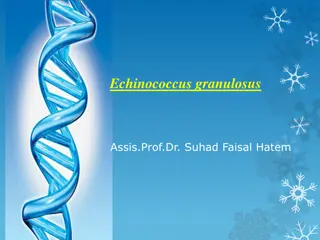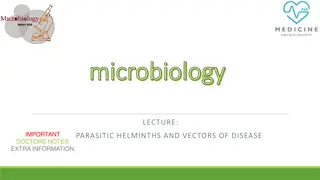Gametogenesis and Oogenesis Process in Humans
Gametogenesis is the formation of gametes from germ cells in the testes and ovaries, involving meiosis and cytodifferentiation. Oogenesis specifically refers to the differentiation of oogonia into mature oocytes, with prenatal oogenesis occurring before birth and postnatal oogenesis after birth. The process involves the development of primary oocytes and follicles, with only a fraction surviving to be ovulated. Maturation of oocytes occurs at birth and during childhood, with a significant decrease in numbers before puberty. At puberty, follicles begin to mature monthly, leading to the ovulation of one mature follicle.
Download Presentation

Please find below an Image/Link to download the presentation.
The content on the website is provided AS IS for your information and personal use only. It may not be sold, licensed, or shared on other websites without obtaining consent from the author.If you encounter any issues during the download, it is possible that the publisher has removed the file from their server.
You are allowed to download the files provided on this website for personal or commercial use, subject to the condition that they are used lawfully. All files are the property of their respective owners.
The content on the website is provided AS IS for your information and personal use only. It may not be sold, licensed, or shared on other websites without obtaining consent from the author.
E N D
Presentation Transcript
GAMETOGENESIS OOGENESIS Dr. Samer Alnussairi
Objectives Oogenesis (prenatal & postnatal) Ovulation
In preparation for fertilization, Germ cells undergo Gametogenesis (include meiosis). Cytodifferentiation to complete their differentiation.
Gametogenesis Is the process of formation of gametes from germ cells in the testes and ovaries. Male & female germ cells have the same origin, primordial germ cells
Oogenesis Is the process where by oogonia differentiate into mature oocytes. Prenatal oogenesis occurs during embryonic development before birth. Postnatal oogenesis occurs after birth.
Oogonia By the end of the 3rd month, the majority of the oogonia continue to divide by mitosis, but some of them give rise to primary oocytes that enter prophase of the first meiotic division.
By the 5th month of prenatal development, germ cells in the ovary reaches its maximum( 7 million). 7th By the the majority of oogonia have degenerated, All surviving primary oocytes have entered prophase of meiosis I, and most of them are individually surrounded by a layer of flat epithelial cells (primordial follicle ). month,
Maturation of the oocytes - At birth and during childhood Near the time of birth, all primary oocytes have started prophase of meiosis I, but instead of proceeding into metaphase, they enter the diplotene stage , a resting stage during prophase. The total number of primary oocytes at birth is estimated to vary from 700,000 to two million remain. During childhood, most oocytes become atretic. only approximately 400,000 are present by the beginning of puberty, and fewer than 500 will be ovulated.
- At puberty Each month, 15 to 20 follicles begin to mature and passing through three stages: (1) Primary (Preantal). (2) Secondary (Antral). (3) Tertiary or mature vesicular or Graafian follicle (Preovulatory). Under normal conditions, only one of these follicles reaches full maturity and the others degenerate and become atretic.
Unilaminar Primary Follicle Primary oocyte (The total number of primary oocytes at birth is estimated to vary from 600,000 - 800,000). Surrounded by a layer of cuboidal follicular epithelium cells. Beginning of zona pellucida
Multilaminar Primary Follicle The follicular cells change from flat epithelial to cuboidal and proliferate to several layers called granulosa layer. Zona pellucida.
Secondary (Antral) Follicles Fluid filled spaces appear between the granulosa cells. coalescence of these spaces form the antrum which is crescent shaped, but with time it enlarges. The follicle is surrounded by: 1. Theca Interna. 2. Theca Externa.
Tertiary Follicle Granulosa cells surrounding the oocyte form the cumulus oophorus.
Maturation of the oocyte Meiosis I is completed, resulting in formation of two daughter cells of unequal size, each with 23 double- structured chromosomes. One cell, the secondary oocyte, receives most of the cytoplasm; the other, the first polar body, receives practically none. The cell then enters meiosis II but arrests in metaphase approximately 3 hours before ovulation.
Ovulation With onset of puberty and under the hormonal control the Ovarian Cycle will start. The oocyte, in metaphase of meiosis II, is discharged from ovary together with a large number of cumulus oophorus cells. Some of the cumulus oophorus cells then rearrange themselves around the zona pellucida to form the corona radiata Meiosis II is completed only if the oocyte is fertilized; otherwise, the cell degenerates approximately 24 hours after ovulation. The first polar body may undergo a seconddivision.























